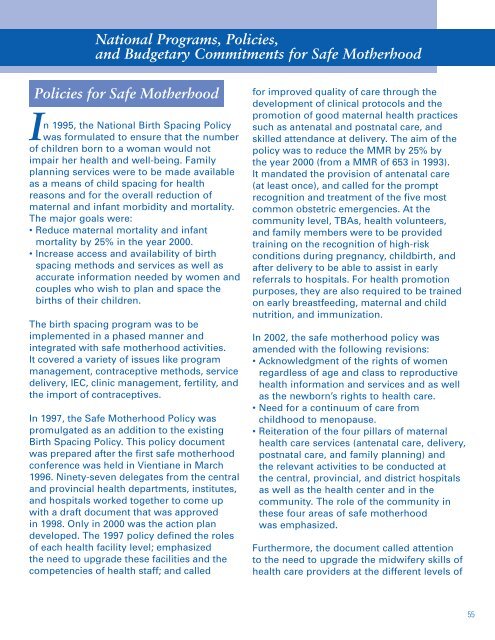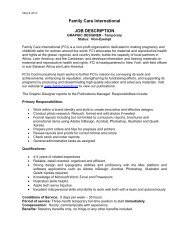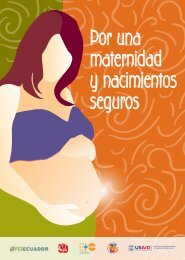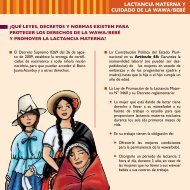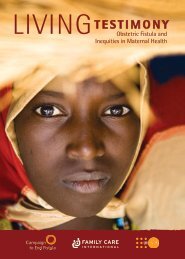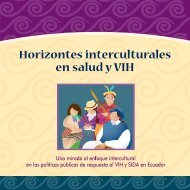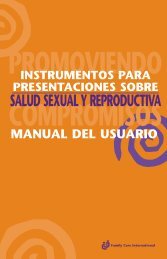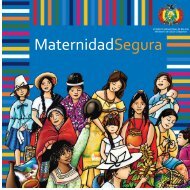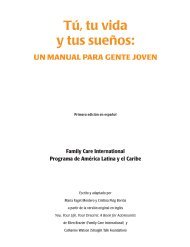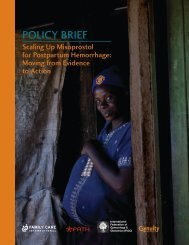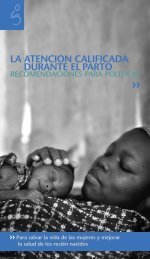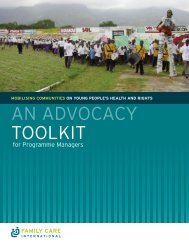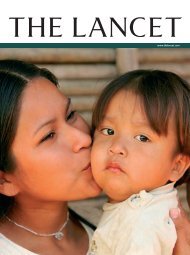Safe Motherhood: A Review - Family Care International
Safe Motherhood: A Review - Family Care International
Safe Motherhood: A Review - Family Care International
You also want an ePaper? Increase the reach of your titles
YUMPU automatically turns print PDFs into web optimized ePapers that Google loves.
National Programs, Policies,<br />
and Budgetary Commitments for <strong>Safe</strong> <strong>Motherhood</strong><br />
Policies for <strong>Safe</strong> <strong>Motherhood</strong><br />
In 1995, the National Birth Spacing Policy<br />
was formulated to ensure that the number<br />
of children born to a woman would not<br />
impair her health and well-being. <strong>Family</strong><br />
planning services were to be made available<br />
as a means of child spacing for health<br />
reasons and for the overall reduction of<br />
maternal and infant morbidity and mortality.<br />
The major goals were:<br />
• Reduce maternal mortality and infant<br />
mortality by 25% in the year 2000.<br />
• Increase access and availability of birth<br />
spacing methods and services as well as<br />
accurate information needed by women and<br />
couples who wish to plan and space the<br />
births of their children.<br />
The birth spacing program was to be<br />
implemented in a phased manner and<br />
integrated with safe motherhood activities.<br />
It covered a variety of issues like program<br />
management, contraceptive methods, service<br />
delivery, IEC, clinic management, fertility, and<br />
the import of contraceptives.<br />
In 1997, the <strong>Safe</strong> <strong>Motherhood</strong> Policy was<br />
promulgated as an addition to the existing<br />
Birth Spacing Policy. This policy document<br />
was prepared after the first safe motherhood<br />
conference was held in Vientiane in March<br />
1996. Ninety-seven delegates from the central<br />
and provincial health departments, institutes,<br />
and hospitals worked together to come up<br />
with a draft document that was approved<br />
in 1998. Only in 2000 was the action plan<br />
developed. The 1997 policy defined the roles<br />
of each health facility level; emphasized<br />
the need to upgrade these facilities and the<br />
competencies of health staff; and called<br />
for improved quality of care through the<br />
development of clinical protocols and the<br />
promotion of good maternal health practices<br />
such as antenatal and postnatal care, and<br />
skilled attendance at delivery. The aim of the<br />
policy was to reduce the MMR by 25% by<br />
the year 2000 (from a MMR of 653 in 1993).<br />
It mandated the provision of antenatal care<br />
(at least once), and called for the prompt<br />
recognition and treatment of the five most<br />
common obstetric emergencies. At the<br />
community level, TBAs, health volunteers,<br />
and family members were to be provided<br />
training on the recognition of high-risk<br />
conditions during pregnancy, childbirth, and<br />
after delivery to be able to assist in early<br />
referrals to hospitals. For health promotion<br />
purposes, they are also required to be trained<br />
on early breastfeeding, maternal and child<br />
nutrition, and immunization.<br />
In 2002, the safe motherhood policy was<br />
amended with the following revisions:<br />
• Acknowledgment of the rights of women<br />
regardless of age and class to reproductive<br />
health information and services and as well<br />
as the newborn’s rights to health care.<br />
• Need for a continuum of care from<br />
childhood to menopause.<br />
• Reiteration of the four pillars of maternal<br />
health care services (antenatal care, delivery,<br />
postnatal care, and family planning) and<br />
the relevant activities to be conducted at<br />
the central, provincial, and district hospitals<br />
as well as the health center and in the<br />
community. The role of the community in<br />
these four areas of safe motherhood<br />
was emphasized.<br />
Furthermore, the document called attention<br />
to the need to upgrade the midwifery skills of<br />
health care providers at the different levels of<br />
55


